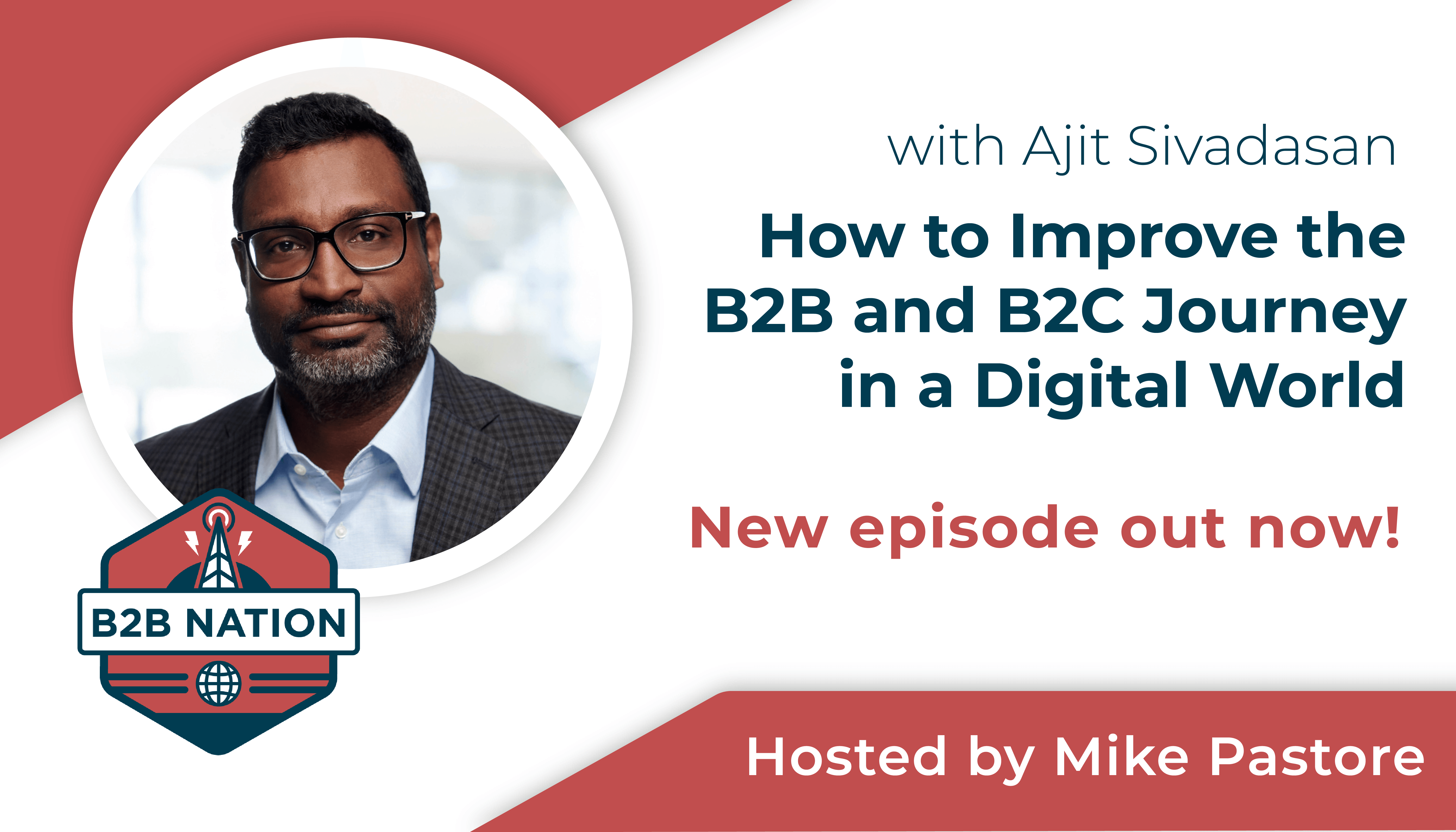In this episode of B2B Nation we talk with Ajit Sivadasan, who leads online sales for Lenovo across B2B and B2C in 35 countries. Ajit’s role allows him to bring a unique perspective on the convergence of B2B and B2C buyers.
As Ajit tells us, the old way of segmenting and identifying customers into B2C and B2B buckets is no longer applicable. In our digital world, an IT executive might buy a personal device on Monday and data center solutions on Wednesday, and marketers and customer experience professionals need to understand these tendencies in order to succeed.
Our conversation also touches on digital transformation at Lenovo, the essential skills marketers will need in the coming decade and more.

Podcast Highlights
2:38
Ajit Sivadasan: When I think about the web sales and what I do with the web customers, it’s a continuum. It starts with a person who’s buying one unit for their home, or a gamer who buys a product, all the way to people who are buying data center products for enterprises — our storage solutions or any of the complex solutions that they want for their enterprise. They all buy from the web in varying ways.
What is really interesting, I think, is in the past we’ve always felt like every individual could also be a B2B buyer. You just don’t know, because they’re buying something for their home, but they’re also a CIO or a decision-maker for a company that is actually making a purchase for something that is much bigger. But now, with all of the digital transformation that we see around the block for all the companies, those lines are getting blurred.
And in many ways, customers that are traditional B2B customers, they are also customers that are buying from Amazon and most of the customers are now used to buying online. So their expectation, either consciously or subconsciously, is quite a bit influenced by their [online] purchase experiences]. And therefore I think that [consumer-style experience] is the kind of signal they are more and more attune to. Maybe it’s subconscious, but the reality is, if you are a marketer, you have to really worry about these two worlds melding.
So you have to take the individual perspective and always know that maybe some of these individuals might be buying larger purchases. So how do we make sure that the customer journey, and the various aspects that make it compelling, are sensitive to how customers are changing their perception and their buying patterns and behaviors? In absolute terms, yes, the behavioral change [toward B2B and B2C convergence] we absolutely see.
In terms of what is happening in people’s minds, I also see another major trend, which is more and more, at least in SMB customers, where they don’t really need to talk to people. Or maybe they talk to a salesperson once. But they actually want to be in this sales cycle where they can actually make decisions without having to involve a lot of people, and make a decision much more to their liking and basically at their convenience.
So as we are more and more thinking about SMB customers and we are thinking about our enterprise customers, we are certainly bringing some of our learnings that we get from the consumer side of the house to say “How do we make it easier? How do we simplify?” Common examples are search, as an example. I mean, you wouldn’t think about search as being such a big deal for B2B customers, but in the B2C world it’s a huge deal. But search is becoming a big deal for everybody, and therefore you cannot ignore that.



